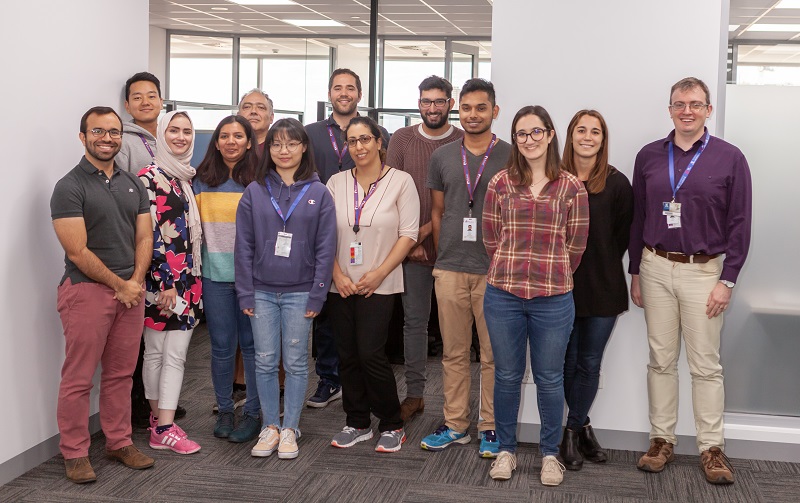Early in 2020, the University of Melbourne’s Bio21 team was working on protein modelling to better understand antimicrobial resistance for improved drug development. In March they turned their attention to the SARS-CoV-2 virus, which had already undergone many mutations. In September, the team’s work was published in Nature Genetics.
Associate Professor David Ascher’s team is about 24 strong – including five post-docs, 10 PhD students and Masters students - with diverse skills. Associate Professor Ascher in 2019 received a $1.5 million NHMRC Investigator Grant to pursue his work on 'using protein structure to combat antimicrobial resistance'.

'It was a small leap to adjust that to explore in a pre-emptive fashion how these and future mutations might impact on COVID-19 treatments', said Associate Professor David Ascher.
'As scientists, we not only need to try to control the virus, but we need to outsmart it by predicting how it will change over time.
'You can do things retrospectively but a situation like this allows you to do it in real time. The science response to COVID has been phenomenal.
'In the six months after COVID-19 was identified, over 160,000 full genomes were sequenced around the world. That gave us enormous power to explore different approaches. That’s a really nice thing about how the science world has come together.'
Associate Professor Ascher’s team at the Bio21 Molecular Science and Biotechnology Institute (University of Melbourne), University of Melbourne and the Baker Heart and Diabetes Institute developed the software tool COVID-3D which contains information about all the protein structures encoded by the SARS-CoV-2 (COVID-19) genome, including every known (and possible) genetic mutation and its resultant mutant protein structure.

Protein regions permitting high affinity drug binding can be highlighted according to chemical nature: apolar (yellow), hydrogen bond donor (blue) and acceptor (red), in the COVID-3D interactive viewer (ORF3a dimer shown). This enables researchers to target specific proteins with more confidence.
'It is only when you know how a mutation will affect the 3D shape of a protein that you can predict if it will compromise your drug’s ability to bind', Associate Professor Ascher said.
'The Investigator Grant was critical in enabling his team to respond', he said.
'This is the first time we have been able to do this across an entire pathogen. We could model all the proteins, we modelled every mutation of COVID-19, all the structural and functional consequences. The scale that required is something we weren’t able to do without the Investigator Grant.'
On a daily basis anything from 2,000 to 10,000 people around the world are accessing the software from more than 80 countries.
In addition to developing COVID-3D and writing the paper for Nature Genetics, the team is also now looking at image analysis to see how COVID-19 can be diagnosed from chest x-rays, which could be useful in countries like the Philippines where access to diagnostics kits and infrastructure is limited for such a large population.
The team has also been working with groups in the United Kingdom to understand the new variants in the UK and South Africa that are more contagious; and the variant in Brazil that seems to promote immune escape, as well as with pharmaceutical companies to use and interpret the information from the resource.
The team was particularly motivated by the fact that one of their own contracted the virus and is in rehabilitation, and Associate Professor Ascher lost a former colleague at Cambridge University as a result of COVID-19.
'We all wanted to work to make a difference,' he said.
The team continues to update the online tool and work with groups worldwide to facilitate its use.
'It positions us really well for tackling future pandemics. Not only has the world learned to pivot, we now have a really good infrastructure we can use for other infectious diseases. That’s the next step with the Investigator Grant: can we set up an automated pipeline and respond pre-emptively?
'The world is learning how to work together and how we can better tackle emerging pandemics.'